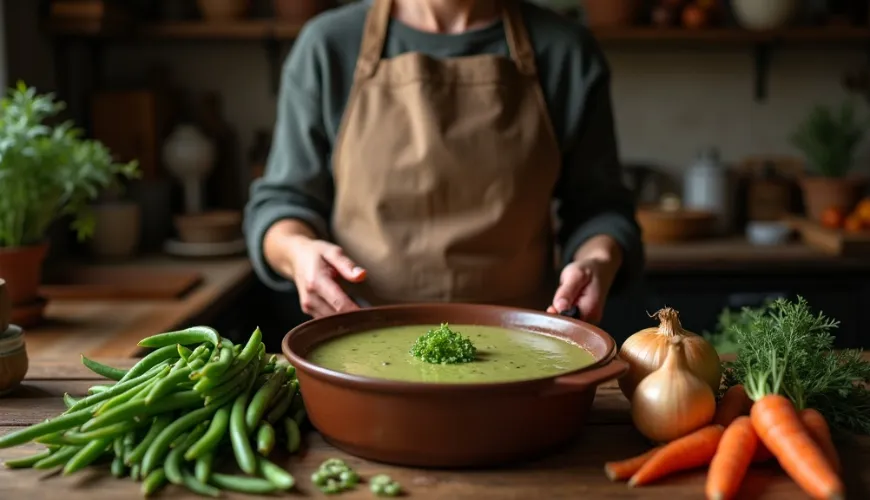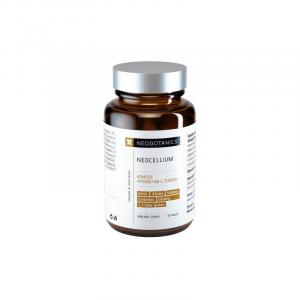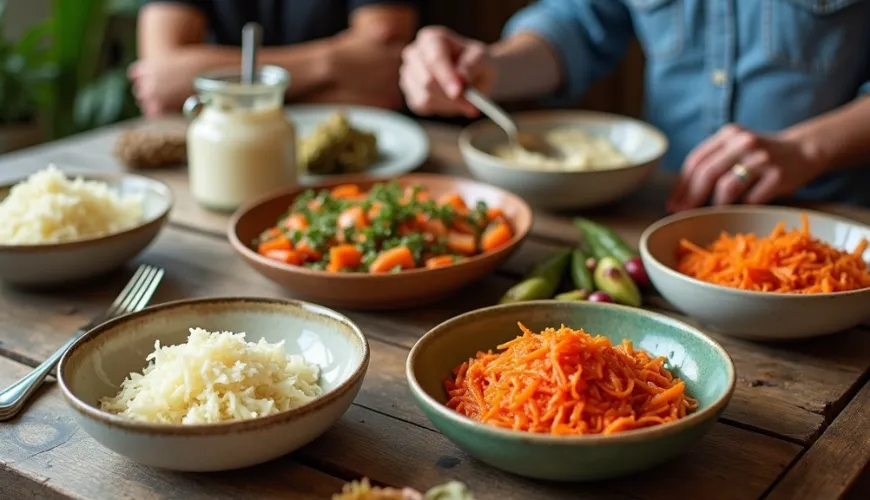
Bean Pod Soup and Its Benefits for Health and Savings

Bean Pod Soup – A Forgotten Treasure of Czech Cuisine
In a time when tradition, local ingredients, and simplicity are coming to the forefront, more and more people are rediscovering recipes that our grandparents already knew. One such dish is the hearty bean pod soup – humble, yet nutritious and rich in flavor. This unassuming dish made from fresh or frozen pods used to be a common part of the summer menu. Today, however, it is often forgotten, and undeservedly so.
Bean pods, or green beans, are not only tasty but also nutritionally valuable. They contain fiber, antioxidants, vitamin C, and folic acid. Moreover, they are available throughout the summer, often from your own garden, and can be easily frozen for winter. Soup made from these pods not only warms and fills you up but also offers a portion of health in every spoonful.
Try our natural products
Diversity of Flavors in One Ingredient
Just as every family has its own recipe for potato soup or goulash, bean pod soup comes in countless variations. Some prefer a light, almost clear version with butter and caraway seeds, while others enjoy a creamy bean pod soup, flavored with garlic and herbs. In Moravia, a sour bean pod soup is often prepared, with the acidity adjusted with vinegar or sour cream. In Bohemia, a white bean pod soup has become popular, where milk tones and mild spices dominate.
A favored version is also bean pod soup with cream, which softens the flavor and gives the dish a richer and smoother texture. Which version is the right one? It depends not only on taste but also on the season and availability of ingredients. In summer, lighter, fresher versions with lemon or vinegar are suitable, while in winter, richer creamy versions with cream and eggs are preferred.
Memories and Cookbooks as a Source of Inspiration
Many recipes for bean pod soup are passed down from generation to generation within families. But just looking into old cookbooks or listening to the memories of grandmothers quickly reveals that this dish was not just an "emergency meal," but a true culinary gem.
One of the elders, Mrs. Marie from Vysočina, recalls: “In summer, we had pods almost all the time. Mom cooked them sour with a bit of vinegar and marjoram. With bread, we were all satisfied. Today, kids would rather buy instant soup." Her words capture how the current generation is moving away from simple homemade meals, even though these often hide the greatest strength – not only nutritional but also cultural.
From Classics to Modern Variations
The basic version of this soup is extraordinarily simple: sauté onions in butter, add chopped bean pods, cover with water or broth, season with salt, caraway seeds, garlic, and cook until tender. It can be complemented with grated carrots, potatoes, or eggs.
For a creamier version, some of the cooked vegetables can be blended or cream can be used to smooth it. In modern cuisine, lemon juice is added to such a creamy bean pod soup for freshness, fresh herbs like parsley or tarragon, and instead of the classic roux, a bit of plant milk or almond cream is used – ideal for vegans.
Sour versions are popular mainly in Moravia and Silesia. The base is enhanced with vinegar, possibly sour cream, and the taste is refined with sugar to achieve a gentle contrast. This sour bean pod soup is highly aromatic and beautifully complements fresh bread or sourdough rolls.
An interesting lesser-known variant is the white bean pod soup, which can be made with milk, potatoes, butter, and a bit of flour. The result is a gentle and filling soup, suitable for children or as a light dinner.
Suitable for Vegetarians and Vegans
A significant advantage of bean soup is its versatility. Many variations are naturally vegetarian and can easily be adapted to a vegan version. Butter can be replaced with vegetable oil, cream with soy or oat cream, and for thickening, smooth flour or blended potatoes are suitable. This makes it a great choice for those who prefer a plant-based diet while not wanting to sacrifice taste and heartiness.
Moreover, it is an ideal way to use up excess produce from the garden or farmers' market. Bean pods can be easily frozen, allowing us to enjoy a warm bowl full of vegetables, reminiscent of a summer garden, even in the winter months.
Why Rediscover Bean Pod Soup?
At a time when more people are striving for a healthier, more sustainable lifestyle, returning to traditional and simple recipes like bean pod soup is a logical step. It is a meal that does not burden the planet, is affordable, easy to prepare, and yet very nutritious. It contains minimal processed ingredients, no hidden preservatives, or additives.
In the context of sustainable cuisine, the opportunity to use leftovers also presents itself – for example, vegetable broth from the previous day, a bit of leftover cream, or harder bread as a side. This way, we can also contribute to reducing food waste, which is currently a pressing issue for both households and the entire food industry.
Moreover, it turns out that simple, local foods are not only healthier but also more environmentally friendly. Instead of exotic ingredients that travel thousands of kilometers, we can reach for what grows just steps from our home.
A Little Inspiration for the Kitchen
Finally, let's present a simple recipe that anyone can manage:
Creamy Bean Pod Soup with Cream
Ingredients:
- 400 g fresh or frozen bean pods
- 1 small onion
- 1 carrot
- 1 large potato
- 2 tablespoons of butter or oil
- 1 garlic clove
- 1 liter of vegetable broth
- 100 ml of cream
- salt, pepper, caraway seeds
- fresh parsley
Instructions:
- Sauté chopped onion and garlic in butter, add diced carrot, potato, and beans.
- Pour in the broth, add salt, pepper, a pinch of caraway seeds, and cook for about 20 minutes until tender.
- Blend part of the vegetables, add cream, and simmer briefly.
- Serve garnished with parsley and with a slice of sourdough bread.
Whichever version you choose, one thing is certain – bean pod soup deserves a place on our table. It is not only a reminder of earlier times but also a practical and delicious solution for today's more conscious cuisine. And who knows – it might become your new favorite dish.





